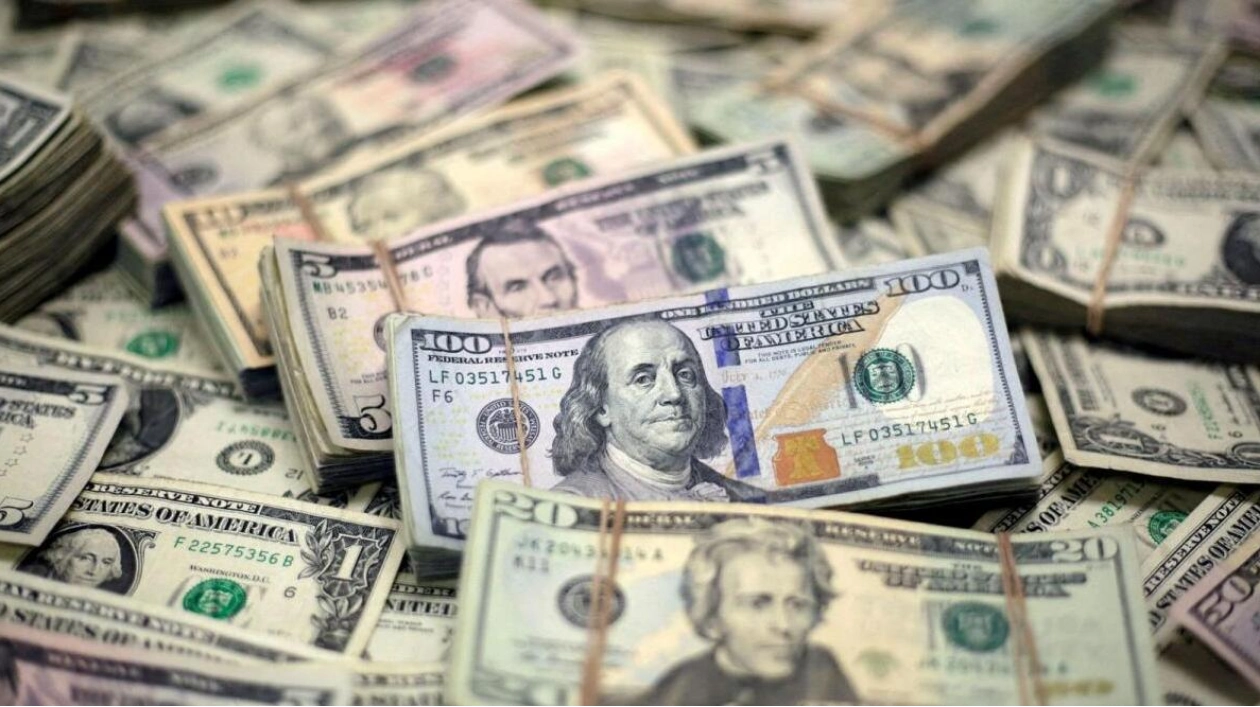The US dollar's downward trajectory is accelerating as anticipated interest rate cuts by the Federal Reserve threaten to bring an end to the greenback's prolonged period of strength. The dollar has dropped by 5 per cent from its 2024 highs, nearing its lowest level in about a year against a basket of its peers following a significant decline last month. The reason behind this is the imminent reduction in US interest rates. For years, a strong US economy and persistent inflation kept rates significantly higher than those of other developed countries, making dollar-based assets more attractive and maintaining its elevated status even after the currency reached a two-decade high in 2022. This yield advantage is now expected to diminish as inflation has cooled, and Fed Chairman Jerome Powell recently indicated that the 'time has come' to start cutting rates, a process anticipated to begin at the central bank's September 17-18 monetary policy meeting.
'We've always held the view that almost regardless of other circumstances, once the Fed starts cutting rates, the dollar would lose ground,' said Brian Rose, senior US economist at UBS Global Wealth Management. 'We still hold that view.' Getting the dollar's trajectory right is crucial for investors due to the currency's central role in global finance. A weaker dollar could enhance the competitiveness of US exporters' products abroad and reduce costs for multinational companies converting foreign profits into greenbacks. How much further the dollar declines in the long term could depend on the depth of the Fed's rate cuts in the coming months and how quickly other global banks follow suit.
For now, the US economy appears stronger than many of its peers. The yield gap between 10-year Treasuries and equivalent German bunds—recently around 160 basis points—has narrowed in recent months but remains close to its five-year average of 167 basis points. However, investors are anticipating substantial rate cuts. Futures tied to the Fed's key policy rate indicate traders are pricing in around 100 basis points of cuts this year, compared to about 60 basis points for the European Central Bank. Commodity Futures Trading Commission data tracking positioning by hedge fund and other speculative investors showed bets on the dollar swung net short to the tune of $8.83 billion for the week ended August 27, the first bearish position in about six months. This compares to a net long of $32.6 billion in May.
'The recent dovish tone from Powell suggests more cuts than initially expected,' said Aaron Hurd, senior portfolio manager, currency, at State Street Global Advisors, who has recently reduced tactical bullish positions on the dollar. Several factors could prevent a deeper dollar decline, at least in the shorter term. August's sell-off, during which the dollar index lost 2.2 per cent, has led some strategists to conclude the US currency may have fallen too quickly.
'While the Fed's long-telegraphed move in September does spell some dollar weakness in the fourth quarter, this recent move we've seen is a bit of an overreaction,' said Helen Given, associate director of trading at Monex USA. Monex USA nevertheless sees the euro at $1.13 by June 2025, implying a drop of about 2 per cent against the dollar. Rose, of UBS, has a similar target for the currency pair. Many are awaiting more evidence of a US economic slowdown before turning more negative on the dollar.
'The economy is slowing but it's still in a very healthy place,' said Thanos Bardas, co-head of global investment-grade fixed income at Neuberger Berman. Investors also believe the winner of the US presidential election in November could influence the currency's fortunes. The latest polls show the leading candidates, Republican Donald Trump and Vice President Kamala Harris, a Democrat, in a tight race. Trump has criticized the currency's strength, arguing it hurts US competitiveness. Yet many of his policies, such as tariffs and tax cuts, could strengthen the dollar, said Bardas.
On Thursday, Trump told the Economic Club of New York that 'we have to continue to have (the dollar) be the world currency,' in response to a question about his use of economic sanctions. 'We cannot lose our dollar standard, very important,' he said. Steven Englander, head of global G10 FX research at Standard Chartered, wrote late last month that a Harris win could bring higher taxes and more pressure on the Fed to ease if economic activity slows.
Ultimately, the market's reaction to lower US rates is likely the determining factor for the dollar's course, said Kit Juckes, FX strategist at Societe Generale. Strong growth has provided the US with an 'insatiable appetite for foreign investment, matched with enthusiastic yield-hunting foreign investors,' he wrote. 'Now that growth is slowing and rates are coming down, we'll see how it plays out.'






